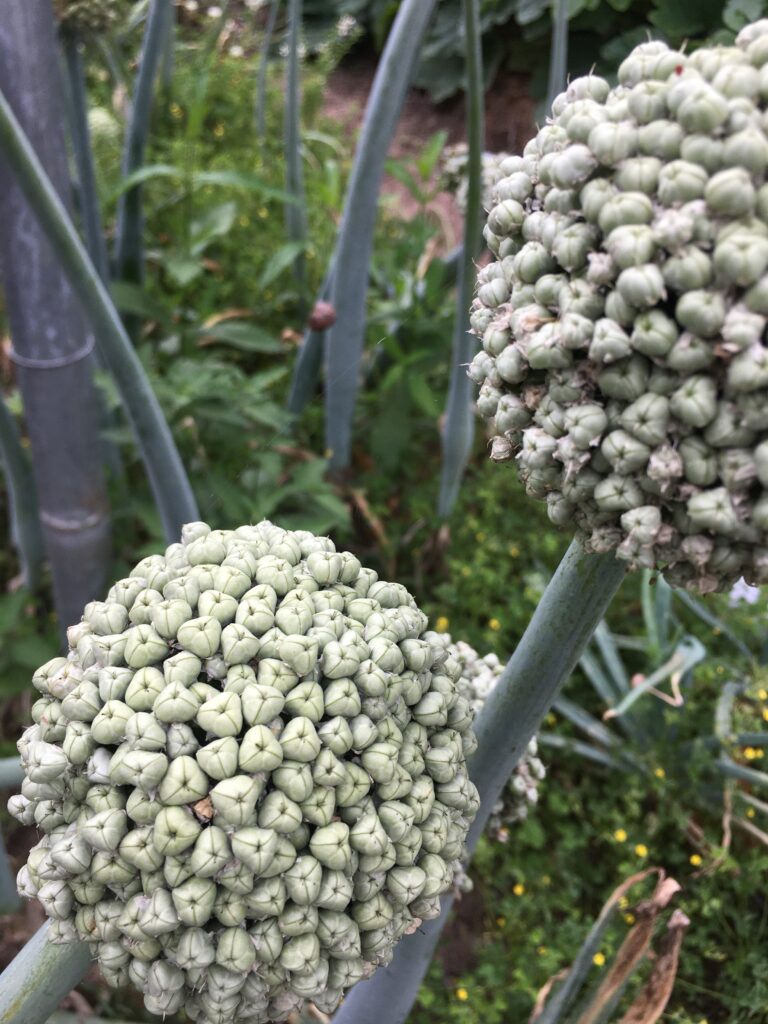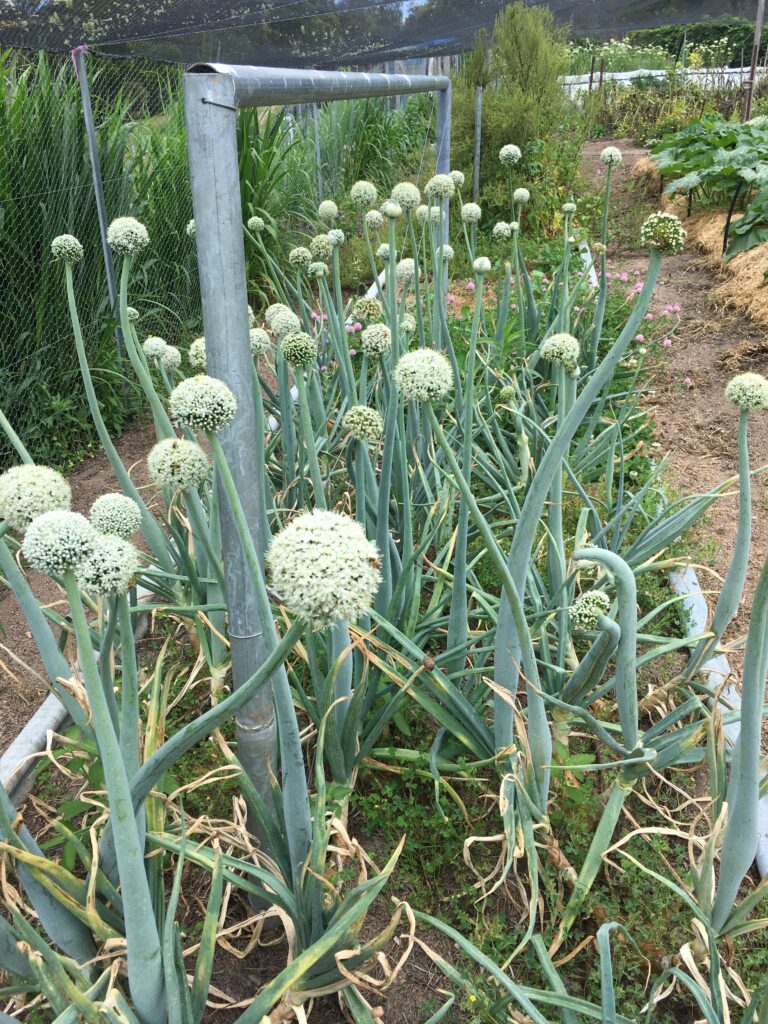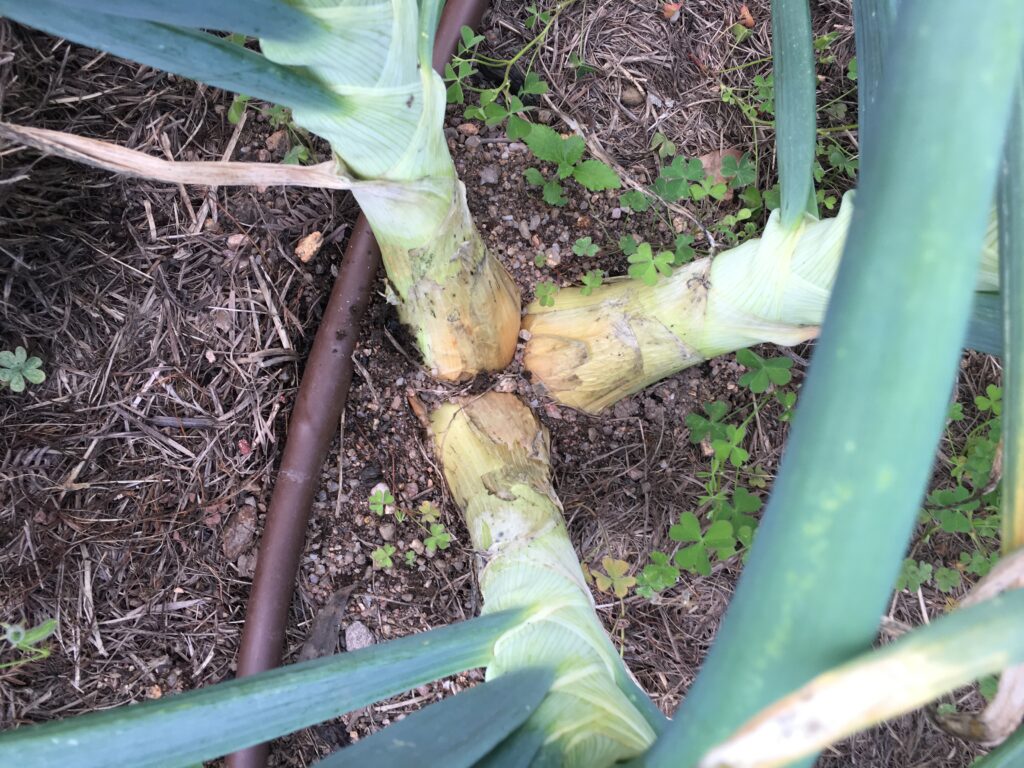Botanical name : Allium cepa
Common name : Onion, bulbing onion, shallot, spring onion, scallion, multiplier onion
Challenging for seed saving
Lifecycle: Biennial or perennial
Pollination: Insect pollinated
Mating system: Perfect flowers
Suggested spacing: 30 to 60 cm
Seed specific requirements: Daylength requirement for sexual maturity followed by vernalisation to initiate flowering
Isolation distance: 250 m
Population size: 10 to 20 plants
Seed maturity: Brown papery capsules in the mature flower head start to open showing the black seeds inside
Processing method: dry threshing, winnowing
Expected seed viability: 2 years
Images



Growing for seed
When growing onions for seed it is important to make sure that varieties of the same species are isolated from each other during flowering. Using common names can lead to confusion.
In Australia the terms shallots, spring onions, scallions, green onions, bunching onions can each mean several different things. They may or may not be of the species Allium cepa. The bulbing onions are Allium cepa. Non-bulbing onions may be Allium cepa or a different species, Allium fistulosum.
Multiplier onions such as potato onions and walking onions are perennial types of Allium cepa. They do not set seed and do not need to be isolated from other Allium cepa seed crops. They are propagated by division or from top set bulbs.
Sexual maturity
Before going through vernalisation to initiate flower the onions must first be grown to sexual maturity, which means grown until a bulb is fully formed. As onions are daylength sensitive, bulbs are formed only when the daylength required by that particular variety is achieved. It is usual to sow seed in mid to late autumn, transfer seedlings to growing locations around the shortest day of the year in late June/early July and then grow through spring into early to mid-summer. The lengthening days of summer trigger the formation of the bulbs. The onions are then harvested in when their tops bend over and their bulbs are fully formed.
Selection of bulbs to be used for the seed crop should occur at this point.
Vernalisation
Bulbs are replanted in late Autumn so that they can go through vernalisation to trigger flowering and seed production. They need a period under 12 C to initiate flowering.
There is a risk of the bulbs rotting in the ground over winter if the ground is wet and temperatures are low enough that they are not actively growing. In wet climates or where there are not enough hours under 12 C the bulbs can be vernalised by holding them in the fridge for a couple of months.
Selection
Bulbs being grown on for seed should be selected on size and form. Specific traits will depend on the variety being grown for seed. As they can be stored for a few months before being replanted an initial assessment of their storage characteristics can also be carried out to determine which bulbs to replant for the seed crop.
Harvest
Flower heads can be harvested as the capsules that make up the flower head turn brown and papery. The ones at the centre of the top will mature first. As soon as they open and the black seeds are visible the whole head should be cut and bagged to finish drying.
Be vigilant to avoid rain wetting matured seed heads and causing mould problems with the seed.
Flower heads can be put into large harvest bags or spread out on tarps for drying.
Processing
Dried flower heads are easily threshed by rubbing them between gloved hands. Sieves can be used to remove the seeds from the stalk and pod fragments. Winnowing will remove smaller frass and leave the black angular seeds.
Storage
After processing seed should be left in a paper bag for a few weeks. Even these small seeds can hold a surprising amount of moisture.
There is a fair likelihood that insect pests will have laid their eggs in or on the seed. To stop them in their tracks one of the easiest methods of control is to freeze the seed for a few days. To do this the seed must be absolutely dry first. It then must be placed in a sealed airtight container – like a glass jar – and left in a freezer for 48 to 72 hours to kill pests and their eggs.
Seed is best stored in an airtight container where it is dark, cool and dry.
Contributors
Liz Worth, Nellie Pryke
